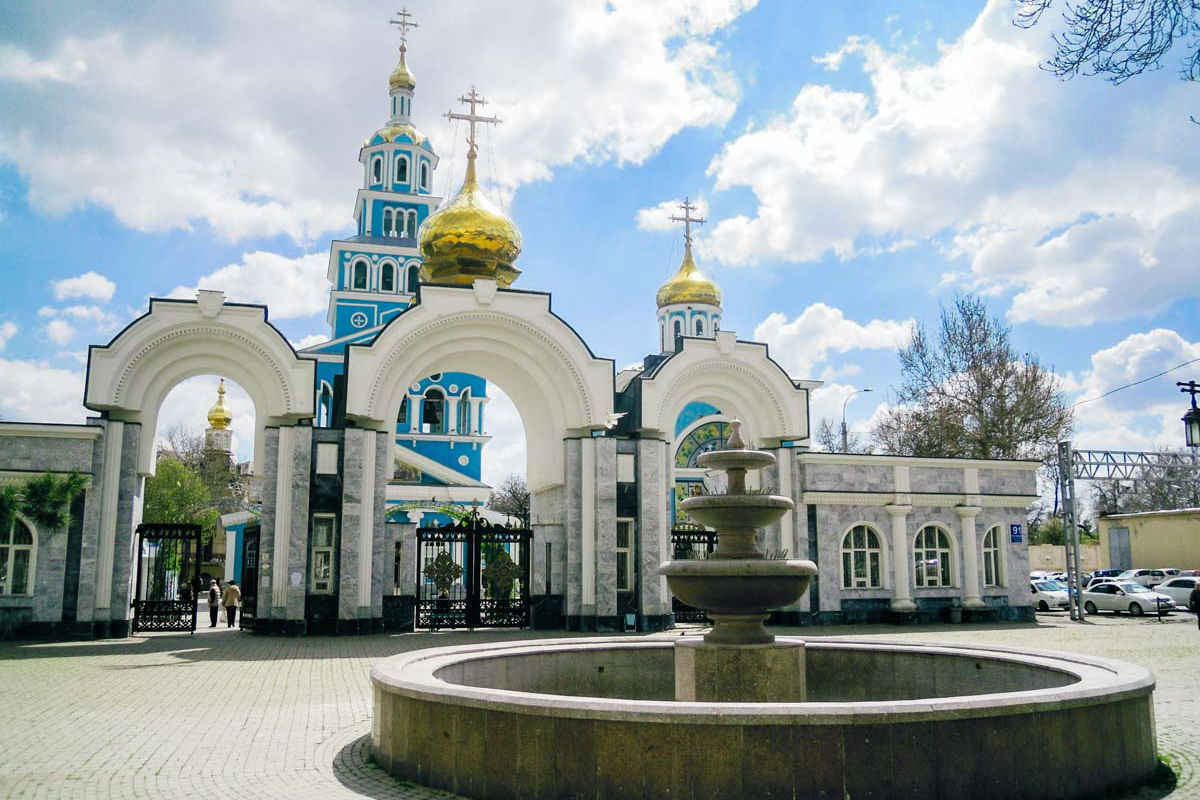Tashkent - the Assumption Cathedral
The Assumption Cathedral is the Orthodox Cathedral of the Diocese of the Russian Orthodox Church in Tashkent. The head of the cathedral is Archbishop Vikenty of Tashkent and Uzbekistan. Next to the cathedral is the diocesan administration and the Orthodox Centre.
In the 60s of the XIX century in Central Asia was a military campaign, which led to the need for a military hospital. A cemetery was built nearby with a temporary small church consecrated in the name of the great martyr and healer Panteleimon.

On the site of this church in the cemetery, construction of the cathedral began in 1877. The hospital director asked for the church to be enlarged as the congregation was growing and the small building could not accommodate all the parishioners. The necessary sum for the construction was raised through the efforts of the citizens. The largest funds came from the Governor General and the wealthy merchant Dmitry Zoho. It was he who held the position of overseer in the constructed temple for more than 10 years.
The church was consecrated after its completion in January 1879. St. Panteleimon, the great martyr, was declared the patron saint of the church. The three-storey stone bell tower is located near the new building.
As the church was originally built on the site of the cathedral in the military hospital of Tashkent, locals still call it the “hospital church”.
The 1920s brought a renewal in the life of the temple, it became the property of the renewed Synod of the Orthodox Church. In the 1930s, the church was closed and services were cancelled. Until the end of the Second World War it was used as a base for the medical camp of the local military district. After the war, it was decided to open the church to the faithful for viewing again, and the rededication was carried out in 1958. After the consecration, there was a solemn five-minute peal in all the churches of the diocese. The reborn church was called the Cathedral of the Assumption of the Blessed Virgin Mary. At the same time, the cathedral became a cathedral. Bishop Yermogen of Tashkent and Central Asia introduced some architectural changes during his tenure – the cathedral was considerably enlarged.
During the years of the Republic’s independence, work was carried out to remodel the dome and part of the bell tower of the cathedral. The area began to be refined and expanded. Many resources and efforts were made to decorate the interior of the temple. Divine Liturgy was held in this cathedral by the Patriarch of Moscow and All Russia Alexy II during his visit to Tashkent. The Divine Liturgy on this momentous day ended with a religious procession.
The development and modernisation of the temple does not stand still – in 2014 another building was erected for the funeral service of the deceased – the Temple of St Luke of Crimea. This famous saint and surgeon lived and served in Tashkent in 1917-1938.
In 2016, extensive renovation work was carried out on the cathedral complex. Meanwhile, the entire building complex in Tashkent includes the Assumption Cathedral, the Waterworks, the Baptistry and the Theological Seminary. The territory is greened and has a fountain – you can take a pleasant walk in a small garden. On the south side of the cathedral, in honour of the centenary of the Tashkent diocese, there is a marble plaque listing all the prelate hierarchs who have led the diocese.
The beauty of the Assumption Cathedral, which is a combination of blue and gold colours, was noted by travellers from Tashkent. The building is in the style of classicism, decorated with white décor, and inside there is an unusually large chandelier. The bell tower, which was reconstructed at the end of the last century, now has 5 floors and impresses with its openwork architecture. In front of the entrance to the site is a triple arch with decorations and a golden dome.
Travellers should bear in mind that photography is prohibited inside the Cathedral of the Assumption of the Mother of God.
